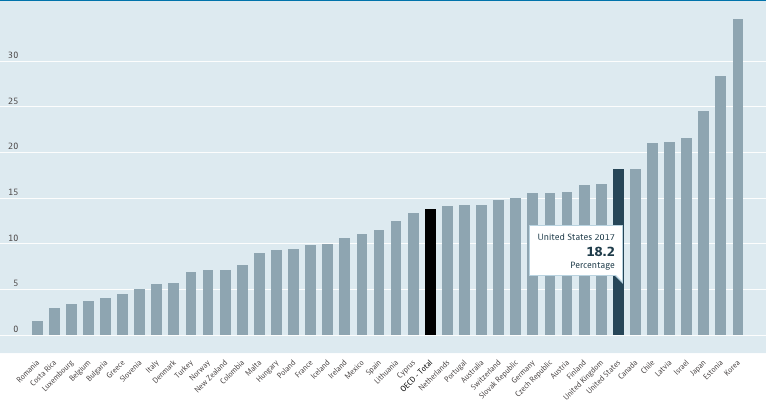OECD studied the percentage difference in full-time earnings between men/women in selected countries.
Everyday it’s becoming more and more evident that women and the rest of the world are walking out to highlight sexual and domestic violence, as well as a huge gulf in equality, particularly the wage gap.
The gender wage gap is defined as the difference between median earnings of men and women relative to median earnings of men, and OECD studied the percentage difference in full-time earnings between men/women in selected countries.
Asia
OECD data (1) shows that South Korea is the country where the wage gap is widest, as a male worker is set to outearn his female counterpart by 34.6%.
This problem is also highly evident in other Asian countries, especially Japan, which was ranked 114th out of the 144 countries surveyed by the World Economic Forum (WEF) in 2017.
North America
Even though things are slightly better in North America, both the U.S. and Canada still have a wage gap of just over 18%.
In Canada, a new report on the country’s highest-paid CEOs is adding evidence to the argument that women face a “double-pane glass ceiling” at the top of Canada’s corporate ladder.
The Canadian Centre for Policy Alternatives calculates that of the more than 1,200 named executive officers, or NEOs, at 249 publicly traded companies in Canada, women earn about 68 cents for every dollar made by their male counterparts. This gap at the top means that, on average, men earn about $950,000 more annually than women in similar executive positions.
In the U.S., women experience $513 billion in lost wages every year because of the stubborn pay gap that persists between them and their male peers, according to a new report from the American Association of University Women.
The consequences of women earning 80 cents on average for every dollar brought home by a man can impact nearly every aspect of their lives, from the ability to pay off college debt to their decisions about having children to how financially stable they are when they ultimately retire.


(1) OECD (2019), Gender wage gap (indicator). doi: 10.1787/7cee77aa-en (Accessed on 08 March 2019)












